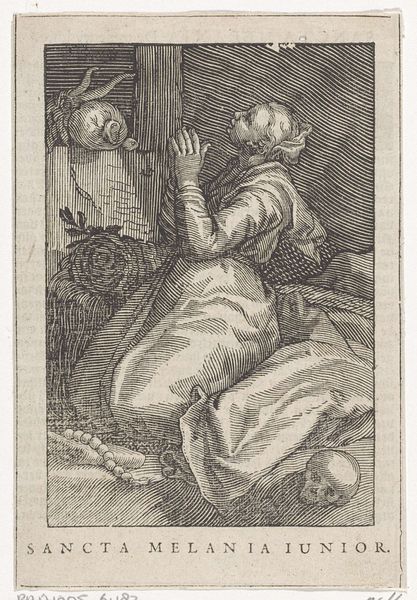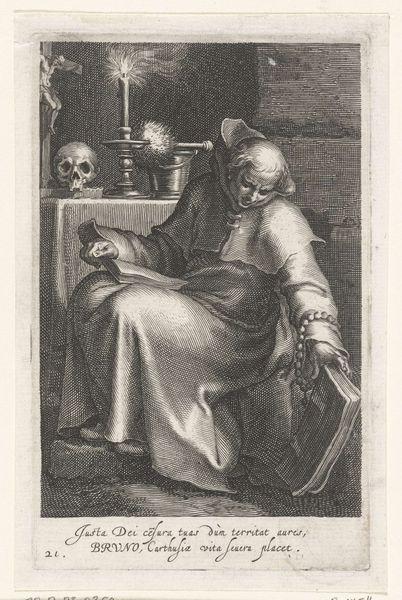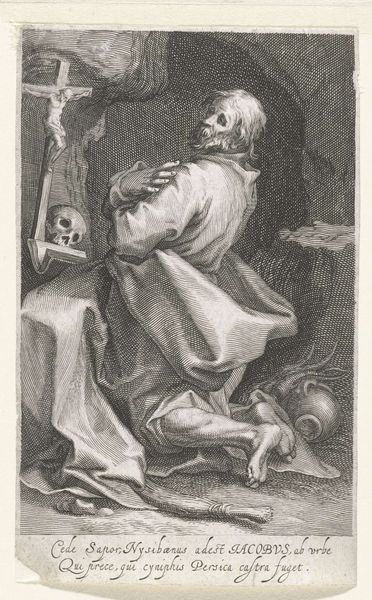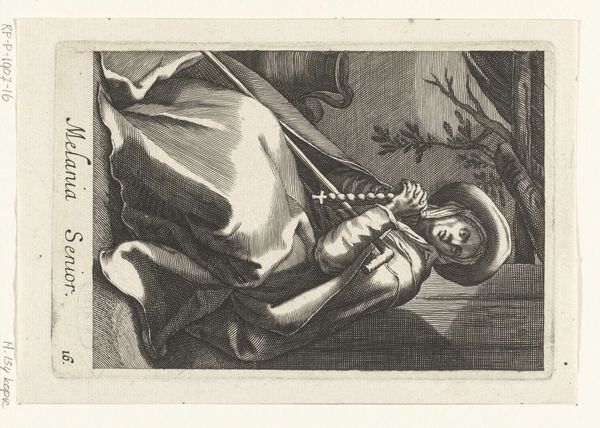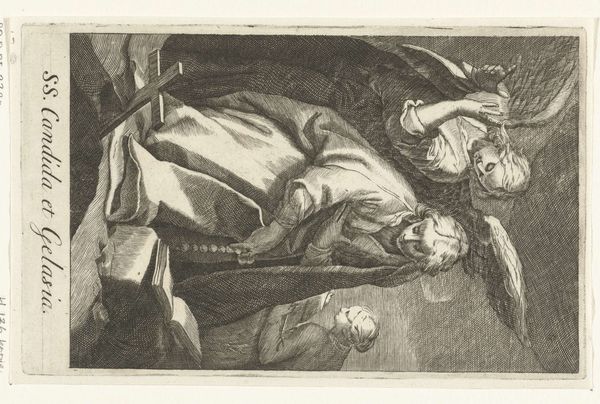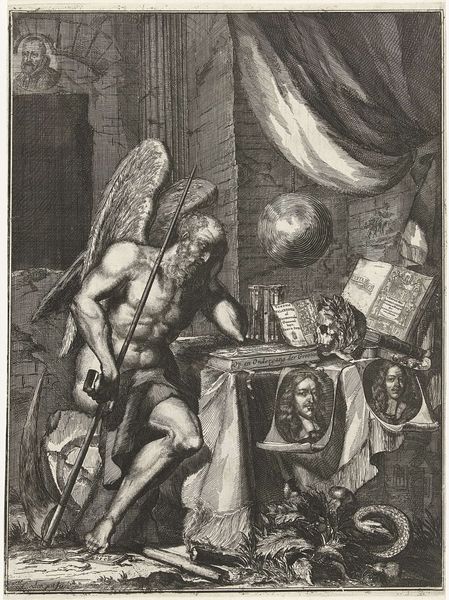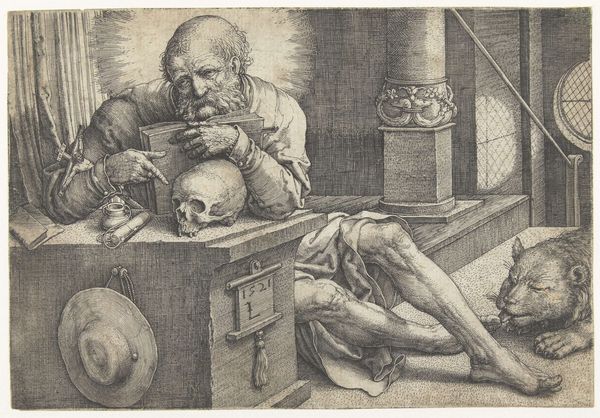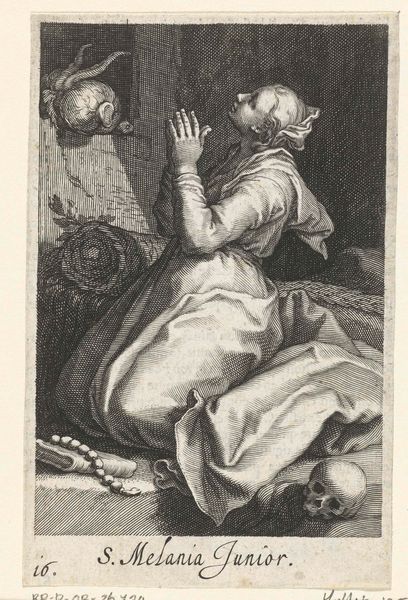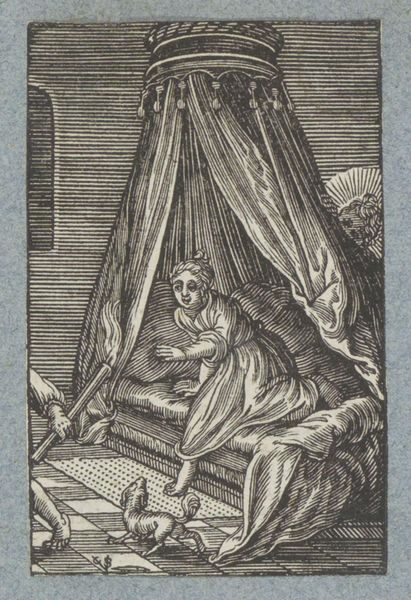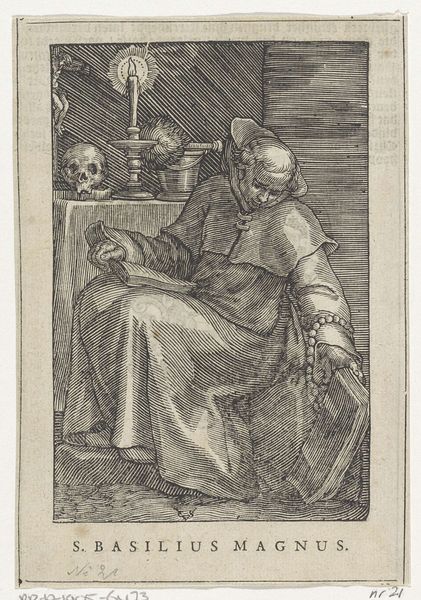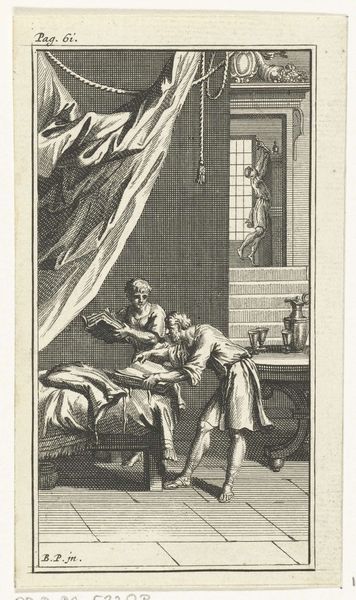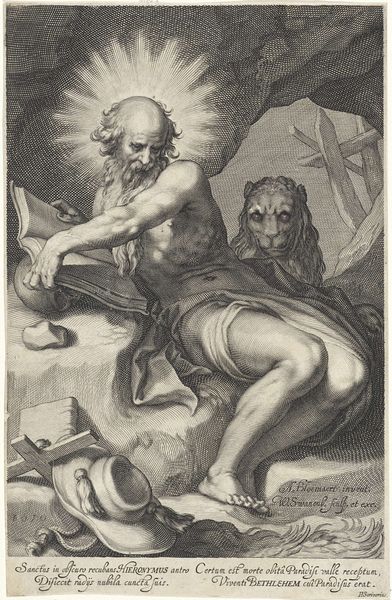
print, engraving
#
portrait
#
baroque
# print
#
mannerism
#
vanitas
#
history-painting
#
engraving
Dimensions: height 145 mm, width 94 mm
Copyright: Rijks Museum: Open Domain
Editor: This engraving, "Heilige Basilius de Grote als kluizenaar," or "Saint Basil the Great as a Hermit" by Boëtius Adamsz. Bolswert, dating from around 1590 to 1619 and housed in the Rijksmuseum, presents a rather somber scene. The stark contrast of light and shadow really emphasizes the figure's contemplation and the surrounding symbols of mortality. How would you interpret this work within its historical context? Curator: Well, viewing this through a historical lens, the emphasis on vanitas elements is crucial. Consider the period – late Mannerism transitioning into Baroque. The prominence of death, illustrated through the skull and fading candle, reflects a broader cultural preoccupation. Religious and political upheavals fostered an environment where artists explored themes of transience and the limitations of earthly life. It functioned as a potent symbol to reinforce piety, a direct reminder for the public on the ever-presence of mortality. Editor: That’s fascinating. The vanitas theme makes perfect sense given the historical climate. Does the choice of Saint Basil as the subject contribute to this interpretation? Curator: Absolutely. Saint Basil, known for his ascetic life and theological contributions, embodies the rejection of worldly pleasures. Depicting him in solitude underscores the ideal of spiritual devotion as a pathway to salvation. Moreover, the location of display undoubtedly shaped its meaning: it was a calculated tool in ecclesiastical circles. Editor: So, it's not just about personal piety but also about public messaging. It is intriguing how these images helped reinforce those religious ideals. Curator: Exactly! Artists catered to specific audiences and power structures, using imagery to guide beliefs and behaviors. So in essence, the selection of imagery helps bolster and/or re-inscribe historical assumptions. Editor: That definitely shifts my understanding of the piece. It is more than just an aesthetic image, and knowing the social function illuminates the piece further. Thanks! Curator: My pleasure. Remembering that art rarely exists in a vacuum truly deepens our appreciation.
Comments
No comments
Be the first to comment and join the conversation on the ultimate creative platform.
